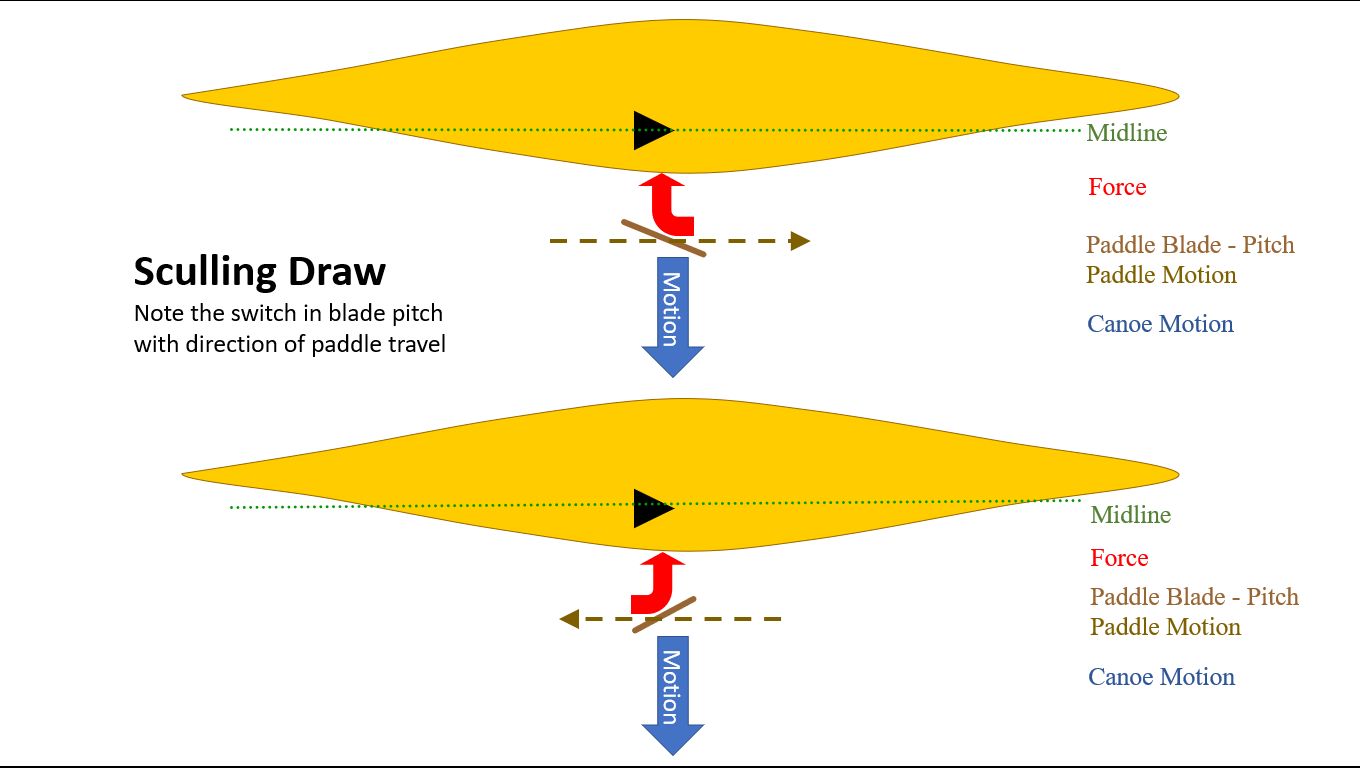
The clips below are the same as this clip but start at specific times points
A sculling stroke is simply moving the paddle back-and-forth through the water with the blade pitched (angled) to the direction of travel. The pitch provides a sideways force to the direction of the paddle movement -- similar to the propeller on an airplane or prop on a motor boat. The stroke length can vary from just a few centimetres to almost a meter depending on need and conditions. At the end end each "back-and-forth" sections the paddle is rotated to continue the scull in the opposite direction. Depending on the placement of the stroke and the pitch sculling can be used to execute a wide variety of manoeuvres. Sculling strokes are a powerful tool in style paddling because the there is continuous force throughout the stroke, and adjustments can be made continuously.
Most efficient sculling strokes for movement have the paddle held as vertically as possible (hands are stacked) with the blade completely submerged. Good body rotation to face the stroke is important for both power and control. The leading edge of the blade is angled to the direction of paddle motion. The back-and-forth motion can be achieved through body rotation, leaning forward/backward, or movement of the grip or shaft hand (using the other as a fulcrum point). Some people describe the back-and forth motion as following a figure-of-eight with a draw (or push) at each end and slice between, I prefer to use a line with constant pressure (from the angled blade).
The examples below either use or are started with a sculling draw - this was done to simplify the examples. Sculling Push Away (or pry) can be used to execute the same and additional manoeuvres.

Two simple sculls - draw and push away.
A sculling draw the leading edge is pointed away from canoe midline by 20 to 45 degrees. I think of this as forming a "V" with the open side in the direction of the paddle motion. The movement produces a force that pulls the paddle away from the paddler or canoe. The 'grip-hand' thumb is toward the back of the boat (if stuck out would point behind the paddler). A sculling push away the leading the leading edge is pointed toward the midline of the canoe by 20 to 45 degrees. The pointy side of the "V" is in the direction of the paddle motion. The movement produces a force that pushes the paddle toward the paddler or canoe.With both simple draw and push away for the length of the stroke paddle motion is parallel to the mid-line of the boat, the blade is pitched. There is no 'hoop' or 'smile' (frown?), just back and forth. By adjusting the weighting in the canoe, the centre point of the scull, or the pitch (in either direction) a whole range of manoeuvres can be achieved.
Back to Home Page
Back to my Canoe Instruction WWW page
August 7, 2021